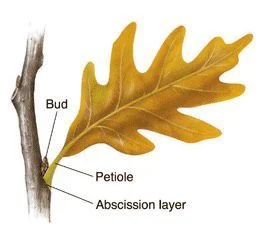There is one thing that you can always count on in the world of horticulture – there is always more to learn about.
I am always fascinated to learn the details of what is happening on the inside of a plant that we may not be aware of.
I recently came across a term that I had never heard of before: that term is marcescence (pronounced “mar-CESS-enss”). The word comes from the Latin marcescere meaning “to fade.”
So, what is a marcescent tree?
In the fall, as the temperatures drop, we are all aware of what happens with deciduous trees – the leaves first turn beautiful colours then drop off and float to the ground.
Not all hardwood trees participate in this pageantry though and they decide to hang onto their leaves until spring. Their leaves will still turn colours in the fall, eventually turning tan to brown and remaining on the tree throughout the winter.
This is a common occurrence with most oaks, beech, hornbeam and witch hazels. Oaks will hang on to most of their leaves for the winter, while beech and hornbeam tend to hang on to the leaves on their lower branches.
These are examples of trees that are practicing marcescence:
In most deciduous trees, leaf drop occurs in autumn when cells between the twig and the petiole (the leaf stem) create an abscission layer (at base of petiole).
The vascular tissue (xylem and phloem) slowly closes, allowing the layers of cells called the abscission layer to completely close off the vein allowing the tree to rid itself of the leaf.
With marcescence, this doesn’t occur until spring. Instead, the base of the petiole remains alive throughout winter.
While scientists have named the process, they are unsure why it exists. I believe that everything that happens in nature happens for a specific reason.
So, is there an advantage to the tree to keep its leaves until spring? Some people theorize that marcescent leaves provide a fresh layer of mulch around the tree by adding nutrients for growth in the new year.
This is particularly advantageous when the tree is growing on a dry, infertile site, which is where oaks and beeches are often found, outcompeting other species growing around them.
Another thought is that these leaves will help conserve soil moisture in the spring by adding shade to the forest floor.
Additional hypotheses hold that marcescence is tied to wildlife. The dried leaves will provide a certain amount of shelter from winter winds for birds.
It may also be that the process is a defence mechanism against browsers such as deer. Scientists speculate that the tree limbs retain the dry and untasty leaves to discourage browsing animals.
Deer prefer to feed on more tender and nutritious buds and twigs. These dried leaves may make it difficult for browsers to nip the new buds, or they simply hide the new growth.
Even if we do not know the purpose of marcescence, we can still enjoy the effect that it creates in our winter gardens.
I think mostly of the pyramidal English oaks that are commonly used as an upright privacy tree. The fact that the leaves remain on the trees for the winter is an added bonus to help provide continued privacy for the winter months as well as the rustling sound of dried leaves.
So, now you have learned your first new word of 2024 and can show off to your friends and family as you point out all the marcescent trees in the area.
Also, a great word for your next game of Scrabble.
Joanne Young is a Niagara-on-the-Lake garden expert and coach. See her website at joanneyoung.ca











